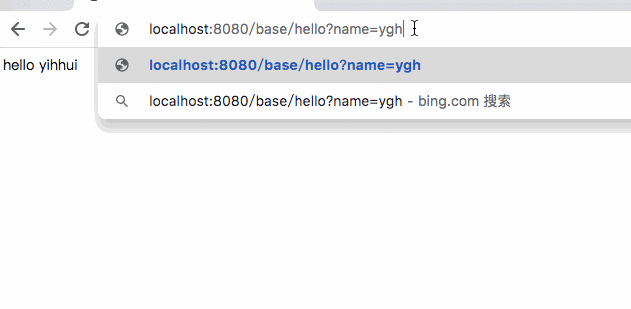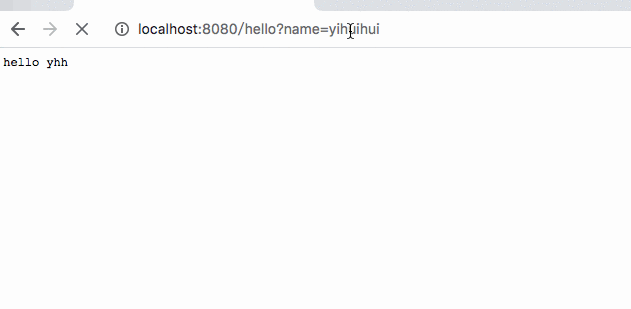【WEB系列】WebFlux之初体验
Spring5就引入了Webflux,基于响应式编程的web框架,号称相比较于传统的SpringMVC性能更加(当然我也没测过,官方以及很多用过的小伙伴都持有这个观点),近年来响应式编程越来越主流了,作为一个紧跟时代潮流的小伙,有必要深入学习一下了
本篇作为Webflux系列教程的开篇,一个hello world的体验版
I. 环境
选择 SpringBoot 2.2.1.RELEASE 来搭建项目环境
pom依赖
<parent>
<groupId>org.springframework.boot</groupId>
<artifactId>spring-boot-starter-parent</artifactId>
<version>2.2.1.RELEASE</version>
<relativePath/> <!-- lookup parent from repository -->
</parent>
<properties>
<project.build.sourceEncoding>UTF-8</project.build.sourceEncoding>
<project.reporting.outputEncoding>UTF-8</project.reporting.outputEncoding>
<java.version>1.8</java.version>
</properties>
<dependencies>
<dependency>
<groupId>org.springframework.boot</groupId>
<artifactId>spring-boot-starter-webflux</artifactId>
</dependency>
</dependencies>
<build>
<pluginManagement>
<plugins>
<plugin>
<groupId>org.springframework.boot</groupId>
<artifactId>spring-boot-maven-plugin</artifactId>
</plugin>
</plugins>
</pluginManagement>
</build>
<repositories>
<repository>
<id>spring-snapshots</id>
<name>Spring Snapshots</name>
<url>https://repo.spring.io/libs-snapshot-local</url>
<snapshots>
<enabled>true</enabled>
</snapshots>
</repository>
<repository>
<id>spring-milestones</id>
<name>Spring Milestones</name>
<url>https://repo.spring.io/libs-milestone-local</url>
<snapshots>
<enabled>false</enabled>
</snapshots>
</repository>
<repository>
<id>spring-releases</id>
<name>Spring Releases</name>
<url>https://repo.spring.io/libs-release-local</url>
<snapshots>
<enabled>false</enabled>
</snapshots>
</repository>
</repositories>
webflux默认开启的端口号也是8080, 如果需要修改,和SpringMVC的配置一样,如修改配置文件 application.yml
server: port: 8080
II. WebFlux体验
使用WebFlux来提供http服务,如果是熟悉SpringMVC这一套玩法的话,基本上只要一点点改动即可
1. SpringMVC写法
借助 @Controller , @RequestMapping 注解来实现rest接口
@RestController
@RequestMapping(path = "base")
public class BasicAction {
@GetMapping(path = "hello")
public Mono<String> sayHello(@RequestParam("name") String name) {
return Mono.just("hello " + name);
}
@GetMapping(path = "loop")
public Flux<ServerSentEvent<String>> everySayHello(@RequestParam("name") String name) {
return Flux.interval(Duration.ofSeconds(1)).map(seed -> seed + seed)
.map(s -> ServerSentEvent.<String>builder().event("rand").data(name + "|" + s).build());
}
}
上面提供了两个接口,请注意返回值
Mono<String> Flux<ServerSentEvent<String>>
其次对于第二个接口 everySayHello ,它实现了SSE的功能,每1s往客户端推送一个字符串
关于sse,推荐查看 【WEB系列】异步请求知识点与使用姿势小结 了解基本知识点;查看 【WEB系列】SSE服务器发送事件详解 查看SpringMVC的用法,两相对比获取更好的体验
接下来演示一下测试结果

2. 函数开发模式
除了上面的写法之外,Webflux还可以通过配置Router来指定url与function之间的匹配关系,在这种写法中,我们常用的Controller被称为Handler;使用 RouterFunction 配置路由
重写一下上面的两个功能
@Component
public class ShowAction {
public Mono<ServerResponse> hello(ServerRequest serverRequest) {
return ServerResponse.ok().contentType(MediaType.TEXT_PLAIN)
.body(Mono.just("hello " + serverRequest.queryParam("name").orElse("NoBody")), String.class);
}
/**
* sse 服务端推送模式, 每隔一秒向客户端推送一次数据
*
* @param serverRequest
* @return
*/
public Mono<ServerResponse> sendTimePerSec(ServerRequest serverRequest) {
return ok().contentType(MediaType.TEXT_EVENT_STREAM).body(Flux.interval(Duration.ofSeconds(1))
.map(l -> new SimpleDateFormat("HH:mm:ss").format(new Date())), String.class);
}
}
请注意,上面的写法并没有表明什么url匹配这个方法,所以我们需要额外的配置
@Configuration
public class RouterConfig {
@Autowired
private ShowAction showAction;
@Bean
public RouterFunction<ServerResponse> timerRouter() {
return RouterFunctions
.route(RequestPredicates.GET("/hello"), showAction::hello)
.andRoute(RequestPredicates.GET("/times"), showAction::sendTimePerSec);
}
}
再次测试

3. 小结
本文主要属于 webflux 的 hello world 篇,主要目的就是先对这个有一点熟悉和了解,函数式编程模式和我们一把的开发方式还是有一些区别的,这些会在后续的系列教程中逐步展开
下一篇将主要介绍WebFlux中的两个重要的类 Mono , Flux 是什么,怎么用(恳请持续关注:blush::blush::blush:)
II. 其他
0. 项目
- 工程: https://github.com/liuyueyi/spring-boot-demo
- 源码: https://github.com/liuyueyi/spring-boot-demo/blob/master/spring-boot/200-webflux
1. 一灰灰Blog
尽信书则不如,以上内容,纯属一家之言,因个人能力有限,难免有疏漏和错误之处,如发现bug或者有更好的建议,欢迎批评指正,不吝感激
下面一灰灰的个人博客,记录所有学习和工作中的博文,欢迎大家前去逛逛
- 一灰灰Blog个人博客 https://blog.hhui.top
- 一灰灰Blog-Spring专题博客 http://spring.hhui.top

打赏 如果觉得我的文章对您有帮助,请随意打赏。











![[HBLOG]公众号](https://www.liuhaihua.cn/img/qrcode_gzh.jpg)

